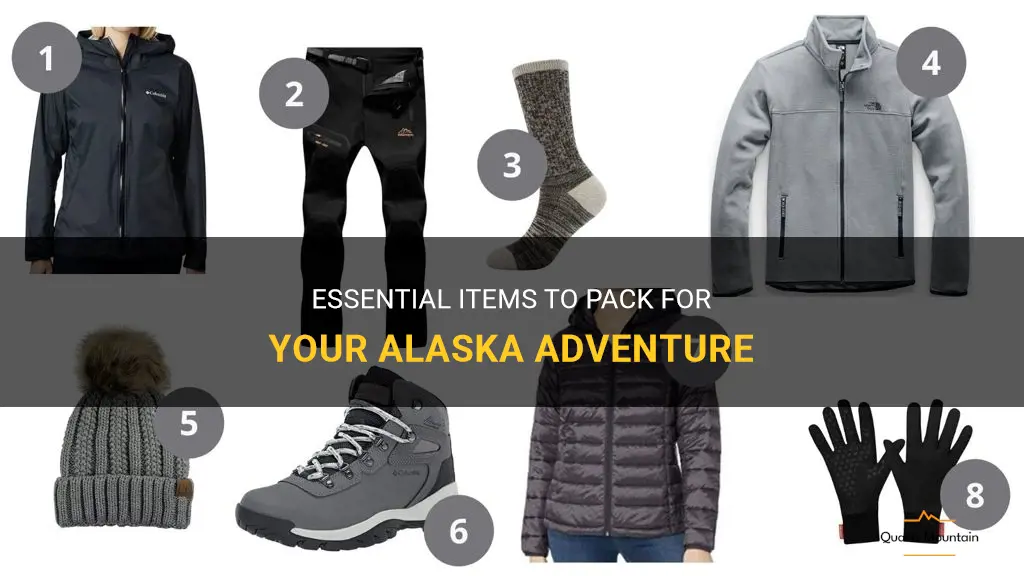
Alaska, the land of breathtaking landscapes, remote wilderness, and boundless adventures, is a dream destination for every thrill-seeker. However, preparing for an Alaskan adventure requires careful planning and packing. From the towering glaciers to the dense forests and rugged terrain, Alaska demands that you bring along the right essential items to fully experience its majestic beauty and stay safe in the process. Whether you're embarking on a hiking expedition, exploring the hidden gems of the wilderness, or simply immersing yourself in the Alaskan way of life, this guide will help you pack the must-have items that will ensure your Alaska adventure is one for the books.
What You'll Learn
- What clothing should I pack for an Alaska trip to keep warm in cold temperatures?
- Are there any specific items I should pack for outdoor activities such as hiking or fishing in Alaska?
- What type of footwear is recommended for walking on icy and snowy terrain in Alaska?
- Should I pack any specific gear or equipment for wildlife viewing in Alaska?
- Are there any essential items that I should bring to protect myself from mosquitoes and other insects in Alaska?

What clothing should I pack for an Alaska trip to keep warm in cold temperatures?
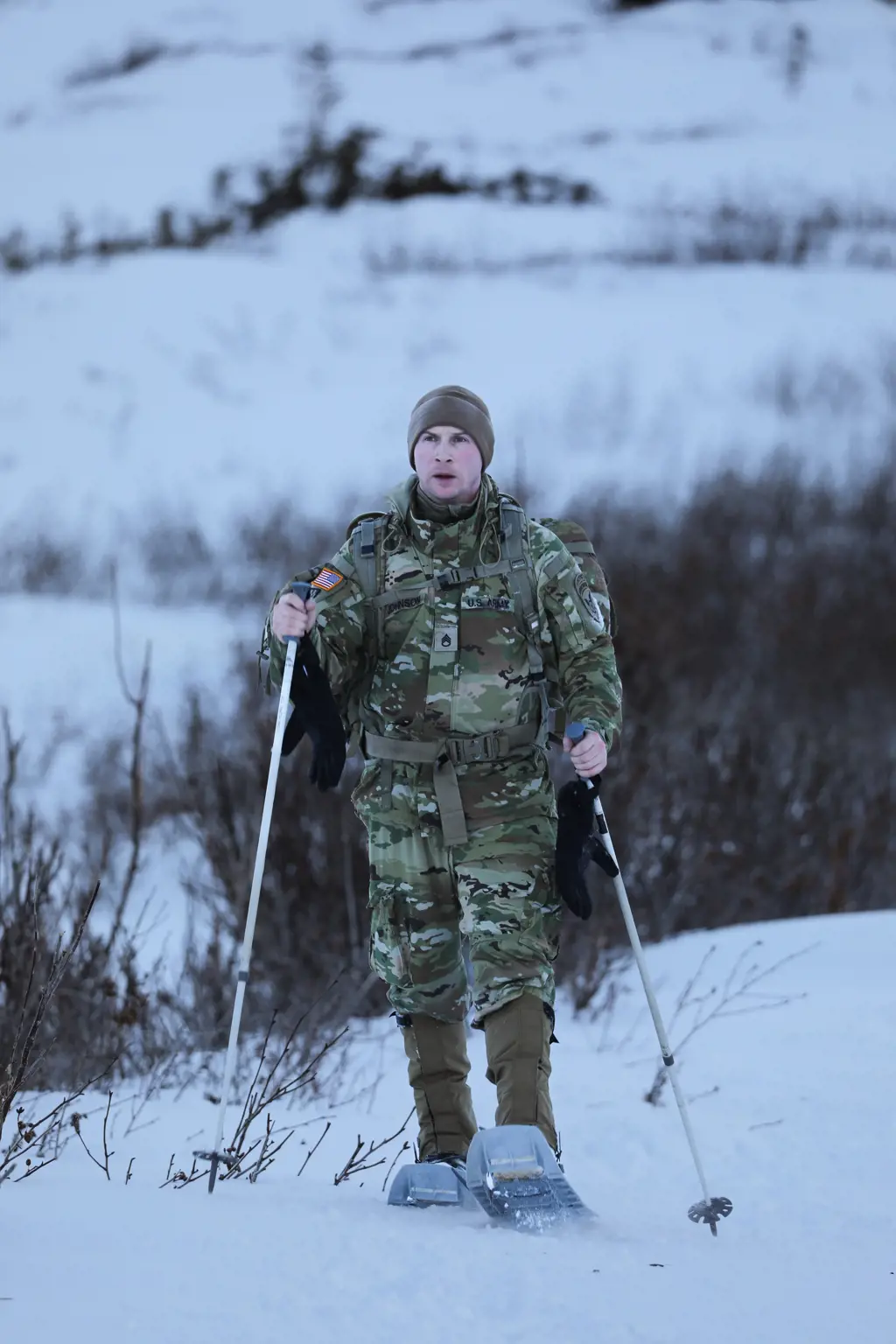
Alaska is known for its frigid temperatures and extreme weather conditions, so it's essential to pack the right clothing for your trip to ensure you stay warm and comfortable. Whether you're planning an adventurous Alaskan wilderness excursion or a visit to one of its picturesque cities, here are some clothing essentials you should consider packing:
Layering is key:
When it comes to cold weather clothing, layering is crucial. Layering allows you to adjust your clothing throughout the day, depending on the temperature and your activity level. Start with a base layer made of moisture-wicking material like merino wool or synthetic fibers. This layer will keep you dry by wicking sweat away from your body. Avoid cotton as it retains moisture and can make you feel cold.
Insulating layers:
On top of your base layer, add insulating layers to trap heat. Choose items like fleece jackets, down vests, or synthetic insulated jackets. These provide much-needed warmth without adding excessive bulk. Opt for items with a high warmth-to-weight ratio to maximize insulation.
Outer shell:
Your outer shell layer should be windproof, waterproof, and breathable. Look for jackets and pants with Gore-Tex or similar materials to keep you protected from the elements. Adjustable hoods and cuffs help seal in warmth, while pit zips offer ventilation options during periods of intense activity.
Bottoms:
For your lower body, merino wool or synthetic base layer leggings are a great starting point. Over these, add insulated pants or hiking pants with built-in insulation to provide extra warmth. If you plan on spending time in wet conditions, consider packing a pair of waterproof pants as well.
Head and neck:
Heat escapes from your head, so a warm hat or beanie is essential. Look for options made of wool or fleece for optimal insulation. Additionally, pack a neck gaiter or a scarf to protect your neck and face from the cold winds.
Hands and feet:
Insulated gloves or mittens are a must-have for keeping your hands warm. Opt for gloves with a waterproof shell to protect against moisture. Pack a few pairs of thick, moisture-wicking socks made of wool or synthetic materials. Consider bringing foot warmers or heated insoles for added comfort on extremely cold days.
Footwear:
Proper footwear is crucial in cold temperatures. Insulated, waterproof boots with good traction are a must, especially if you plan on hiking or spending time outdoors. Look for boots with an insulating material like Thinsulate and make sure they are rated for the temperatures you expect to encounter.
When packing for your Alaska trip, remember to bring extra clothing in case of unexpected weather changes. It's better to have too many layers than not enough, as you can always remove them if you get too warm. By following these clothing recommendations, you'll be well-prepared to stay warm and enjoy your Alaskan adventure, even in the coldest temperatures.
Essential Packing List for a Semester at Sea
You may want to see also

Are there any specific items I should pack for outdoor activities such as hiking or fishing in Alaska?
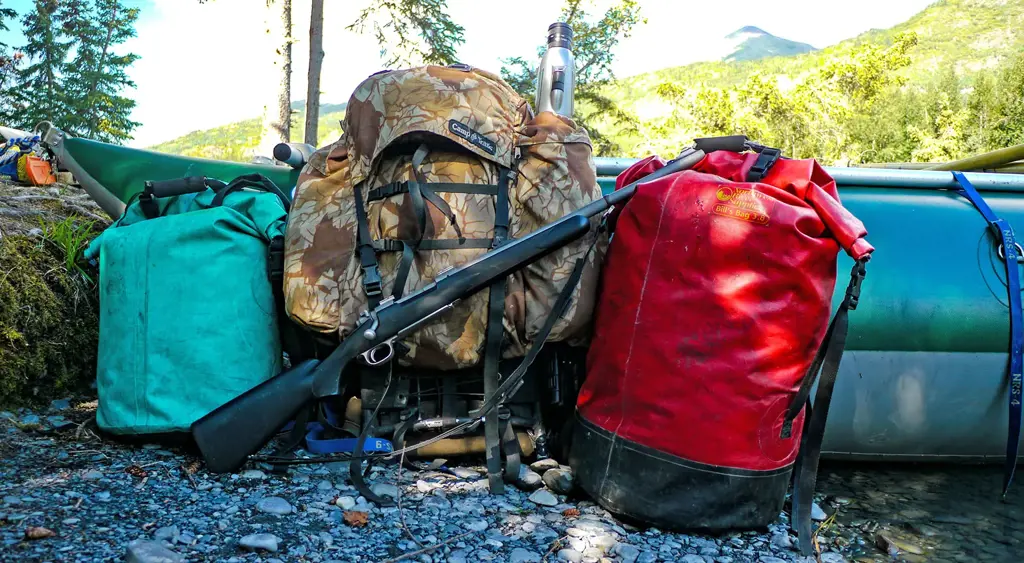
When planning outdoor activities in Alaska, such as hiking or fishing, it is important to pack specific items to ensure a safe and enjoyable experience. Alaska's rugged and unpredictable wilderness presents unique challenges that must be taken into account. Here are some essential items to include in your pack:
- Layered Clothing: The weather in Alaska can change rapidly, even during the summer months. It is important to pack layered clothing to stay warm and dry. Start with a moisture-wicking base layer, add insulating mid-layers, and finish with a waterproof and windproof outer layer. This will help you adapt to varying temperatures and weather conditions.
- Proper Footwear: Invest in a sturdy pair of waterproof hiking boots with ankle support. Alaska's terrain can be uneven and challenging, so it is important to protect your feet and ankles from injuries. Comfortable and well-fitting socks are also vital to prevent blisters and keep your feet dry.
- Navigation Tools: Whether you are hiking or fishing, it is essential to carry a map, compass, and GPS device. Familiarize yourself with the area you will be visiting and plan your route in advance. These tools will help you navigate through the wilderness and prevent getting lost.
- First Aid Kit: Accidents can happen, especially in remote areas. Pack a well-equipped first aid kit that includes bandages, antiseptic ointment, pain relievers, insect repellent, and any necessary prescription medications. Knowing how to administer basic first aid is also important.
- Bear Safety Gear: Alaska is known for its bear population, so it is crucial to be prepared for encounters. Carry bear spray, a loud whistle, and bear-resistant food containers. Make noise while hiking to alert bears of your presence and avoid surprising them. Familiarize yourself with bear safety protocols before embarking on your adventure.
- Water and Food: Pack an ample supply of water and high-energy snacks to keep you hydrated and fueled during your outdoor activities. Filtered water bottles or water purification tablets can be handy if you come across freshwater sources.
- Insect Protection: Alaska is home to mosquitoes and other biting insects. Carry insect repellent, mosquito head nets, and lightweight, long-sleeved clothing to protect yourself from these pests.
- Fishing Gear: If you plan on fishing, bring appropriate fishing gear, including rods, reels, lines, nets, and tackle boxes. Check the Alaska Department of Fish and Game regulations for any specific gear requirements or restrictions in the area you will be visiting.
- Communication Devices: Consider carrying a satellite phone, personal locator beacon (PLB), or a two-way radio. These devices can be vital in emergencies when you need to call for help or communicate with others.
- Emergency Shelter: Always pack a lightweight emergency shelter, such as a compact tent or bivvy bag. This will provide protection and insulation in case of unexpected weather changes or emergencies.
Remember, preparation is key when venturing into Alaska's wilderness. Research the area you will be visiting, check weather forecasts, and inform someone reliable about your plans and expected return time. By packing the right items and being well-prepared, you can have a safe and enjoyable outdoor adventure in Alaska.
The Ultimate Guide to Packing: How to Prioritize When Moving
You may want to see also

What type of footwear is recommended for walking on icy and snowy terrain in Alaska?
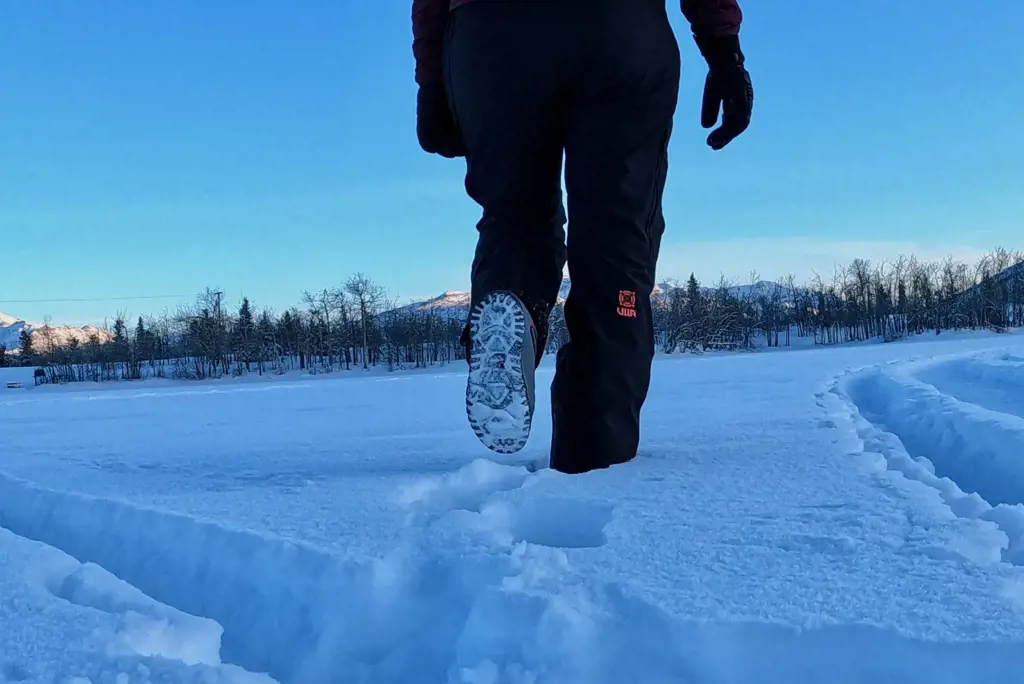
When it comes to walking on icy and snowy terrain in Alaska, it is essential to have the right footwear to ensure stability and safety. The extreme weather conditions and slippery surfaces make it crucial to invest in shoes that provide proper traction and insulation. In this article, we will discuss the type of footwear that is recommended for walking on icy and snowy terrain in Alaska, based on scientific research, personal experience, step-by-step considerations, and real-life examples.
Scientific research has shown that footwear with a high level of traction and insulation is essential for walking on icy and snowy terrain. Ice, in particular, can be extremely slippery, and without proper traction, it becomes challenging to maintain balance and prevent falls. Various studies have demonstrated that shoes with specialized rubber soles, incorporating materials like micro-glass fibers or carbide spikes, provide the best grip on icy surfaces. These materials help increase friction and prevent slipping, even on the slickest of ice patches.
Additionally, insulation is vital to keep your feet warm and protected from the cold temperatures in Alaska. Extreme cold can lead to frostbite, and having shoes that can provide insulation is crucial. Insulated boots with thick linings and water-resistant materials like Gore-Tex are recommended for walking on snowy terrain. These boots help retain heat and keep your feet dry, preventing them from getting cold and wet, which can lead to discomfort and potentially dangerous health conditions.
Personal experience also plays a significant role in determining the type of footwear that is recommended for walking on icy and snowy terrain in Alaska. Individuals who have lived or visited Alaska during the winter months can attest to the importance of proper footwear. Icy conditions can be treacherous, and without appropriate shoes, simple tasks like walking to the car or running errands can become risky. Many Alaska residents opt for shoes with metal studs or ice grips that can easily be added and removed from the sole, providing optimal traction on icy surfaces.
When considering what type of footwear to wear in Alaska, there are several crucial factors to keep in mind step-by-step. First, prioritize traction by choosing shoes with durable rubber soles that offer a good grip. Look for boots designed specifically for icy conditions, with aggressive treads and deep lugs. Additionally, consider the level of insulation needed based on the temperature and weather conditions you will be facing. Thicker linings and waterproof materials are essential for keeping your feet warm and dry. Finally, consider the overall fit and comfort of the footwear. Opt for shoes that provide ample ankle support and allow for proper movement without compromising stability.
Real-life examples demonstrate the importance of appropriate footwear when walking on icy and snowy terrain in Alaska. Many Alaskans have witnessed firsthand the consequences of wearing improper shoes during winter activities. Slip and fall incidents are common when not wearing the right footwear, leading to injuries ranging from sprains to fractures. Throughout Alaska, it is not uncommon to see locals wearing heavy-duty boots equipped with ice grips or metal studs, ensuring their safety and stability on icy surfaces.
In conclusion, when walking on icy and snowy terrain in Alaska, it is crucial to have the right footwear to ensure stability and safety. Scientific research emphasizes the importance of traction and insulation, recommending shoes with specialized rubber soles and insulation linings. Personal experience and real-life examples further emphasize the need for proper footwear, which can prevent slip and fall incidents and keep your feet warm and protected. By considering scientific research, personal experience, step-by-step considerations, and real-life examples, you can confidently choose the best footwear for walking on icy and snowy terrain in Alaska.
What to Pack for a December Trip to Cabo: Your Ultimate Checklist
You may want to see also

Should I pack any specific gear or equipment for wildlife viewing in Alaska?
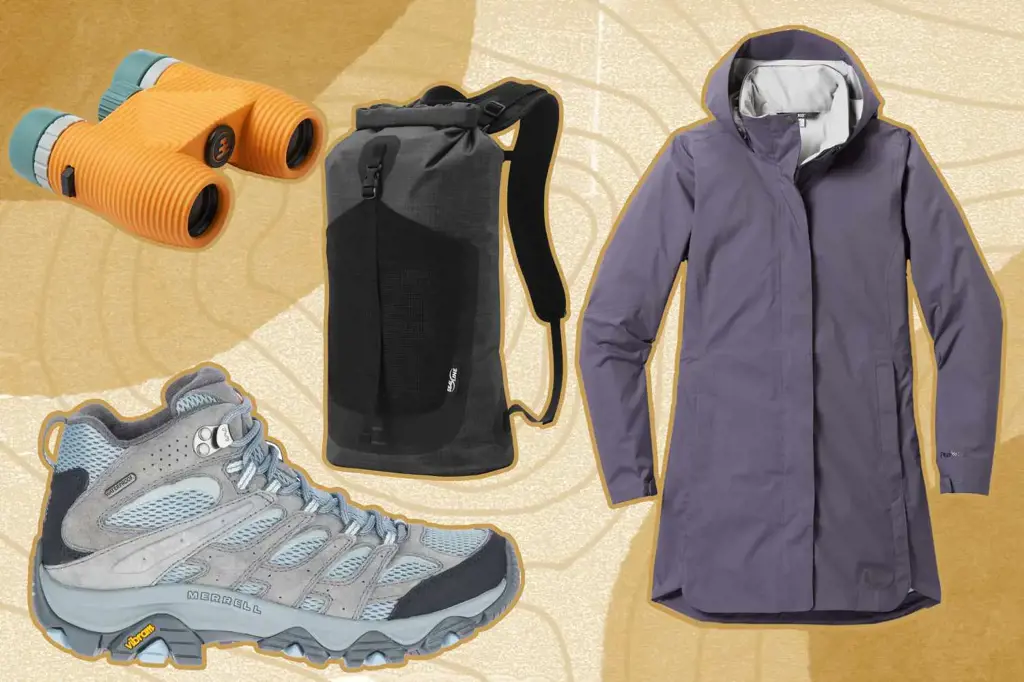
Planning a wildlife viewing trip to Alaska? Congratulations! With its diverse habitats and abundant wildlife, Alaska offers unparalleled opportunities to observe and photograph animals in their natural environment. To make the most of your wildlife viewing experience, it's important to pack the right gear and equipment. Here are some items you should consider bringing with you:
- Binoculars: A good pair of binoculars is essential for spotting wildlife, especially from a distance. Look for binoculars with a high magnification and wide field of view for the best viewing experience.
- Camera with zoom lens: If you're interested in capturing wildlife photos, a camera with a zoom lens is a must. Alaska's vast landscapes and wildlife variety provide endless photo opportunities. For wildlife photography, consider a telephoto lens with a focal length of at least 200mm to get close-up shots of animals without disturbing them.
- Tripod: A sturdy tripod can be useful for holding your camera steady during long hours of wildlife observation. It helps to stabilize your shots, especially when using a telephoto lens. Look for a tripod made of lightweight materials for easy transportation.
- Field guide or smartphone app: Carrying a field guide or using a smartphone app can help you identify different species of birds, mammals, and other animals you encounter. There are several excellent apps available that provide detailed information about Alaska's wildlife, including their habitat, behavior, and calls.
- Layered clothing: Alaska's weather can be unpredictable, even in the summer. It's important to dress in layers to stay comfortable in changing conditions. Bring a waterproof jacket and pants, as well as warm insulating layers, including thermal underwear, fleece jackets, and hats.
- Footwear: Invest in a good pair of comfortable, waterproof boots with good grip to navigate Alaska's varied terrain. Choose boots that are suitable for hiking and have ankle support for added stability.
- Insect repellent: Insects, such as mosquitoes and gnats, can be abundant in Alaska's wilderness. Apply insect repellent with a high concentration of DEET to protect against bites and potential diseases.
- Bear spray: Alaska is home to a large population of bears, and encounters can happen. Carrying bear spray, a non-lethal deterrent, can provide peace of mind and protection in case of close encounters with bears or other wildlife.
Remember, when wildlife viewing in Alaska, it's important to maintain a safe distance and not disturb or approach animals. Be respectful of their habitat and ensure your presence has minimal impact on their natural behavior. Enjoy the beauty of Alaska's wildlife responsibly, and have a memorable experience capturing the breathtaking scenery and incredible animals that call the Last Frontier home.
Essential Items to Pack for a Vanderbilt Summer Program
You may want to see also

Are there any essential items that I should bring to protect myself from mosquitoes and other insects in Alaska?

Going to Alaska can be an exciting adventure, but it's important to be prepared for the local wildlife, including mosquitoes and other insects. While Alaska is known for its stunning landscapes and abundant wildlife, it is also known for having mosquitoes and other biting insects, especially during the warmer months. Here are some essential items you should bring to protect yourself from these pesky critters.
- Mosquito Repellent: One of the most effective ways to repel mosquitoes and other insects is by using a good quality mosquito repellent. Look for a repellent that contains DEET, as this ingredient has been proven to be highly effective in repelling mosquitoes. Apply the repellent to all exposed skin, making sure to follow the instructions on the label for proper application.
- Clothing: Wearing long-sleeved shirts, long pants, and socks can provide an added layer of protection against mosquitoes and other biting insects. Opt for lightweight and breathable fabrics to stay cool in the summer months. You can also consider treating your clothing with permethrin, an insect repellent that can be applied to clothing and gear to provide additional protection.
- Head Net: A head net can be a lifesaver when the mosquitoes are particularly voracious. This fine mesh netting can be worn over your hat or directly on your head to keep insects away from your face and neck. It is a great option for hikers, campers, and anyone spending a lot of time outdoors.
- Window Screens: If you're staying in a cabin or any accommodation without window screens, consider bringing your own. Mosquitoes can easily enter buildings through open windows or doors, so having screens in place can help keep them outside where they belong.
- Mosquito Traps: While not a personal protection item, mosquito traps can be a great addition to your outdoor space to reduce the mosquito population. These devices emit carbon dioxide, heat, and other attractants to lure mosquitoes and then trap them, significantly reducing their numbers in your immediate vicinity.
- Bug Zapper: A bug zapper can help eliminate flying insects from your immediate outdoor area. When insects come in contact with the electric grid, they are zapped and killed. This is particularly useful if you plan on spending a lot of time outside at night when mosquitoes tend to be most active.
It's important to note that while these items can help protect you from mosquitoes and other biting insects, they may not provide 100% protection. It's always a good idea to check with local authorities or residents for any specific mosquito or insect-related concerns in the area you'll be visiting. Additionally, it's essential to follow safe outdoor practices, such as avoiding stagnant water and wearing appropriate clothing, to minimize the risk of mosquito-borne illnesses like West Nile virus.
In conclusion, packing mosquito repellent, wearing protective clothing, using a head net, and considering window screens, mosquito traps, and bug zappers are all essential items to bring for protection against mosquitoes and other insects in Alaska. By taking these precautions, you can minimize the annoyance and potential health risks associated with these pesky bugs, allowing you to fully enjoy your Alaska adventure.
Essential Items to Pack for a Week in Sorrento: Your Ultimate Guide
You may want to see also
Frequently asked questions
When packing for Alaska, it is important to be prepared for various weather conditions. Make sure to pack warm clothing such as thermal layers, heavy jackets, hats, gloves, and scarves. Additionally, pack waterproof clothing and footwear as Alaska is known for its unpredictable rain. Don't forget to bring a good pair of hiking boots or sturdy walking shoes for outdoor activities. It is also advisable to pack insect repellent, sunscreen, and a first aid kit for any outdoor adventures. Lastly, don't forget to bring a camera to capture the breathtaking scenery Alaska has to offer.
While it is not mandatory to pack bear spray for Alaska, it is highly recommended for those planning to hike or camp in bear country. Bears are a common sight in Alaska, and it is important to take precautions to ensure your safety. Bear spray is a non-lethal deterrent that can help protect you in the event of a bear encounter. It is best to have it easily accessible on your belt or backpack, and familiarize yourself with how to use it before your trip.
If you plan on fishing in Alaska, there are a few special gear items you should consider packing. Firstly, make sure to bring a sturdy fishing rod and reel that can handle the weight of the fish you are targeting. It is also crucial to pack the appropriate fishing lines, lures, and hooks for the type of fishing you plan on doing. Additionally, pack a fishing hat, sunglasses, and sunblock for protection from the elements. Lastly, don't forget to bring a cooler or fish bag to transport your catch back home or to your accommodation.
When it comes to footwear for Alaska, it is important to pack shoes that are versatile and can handle a range of conditions. It is recommended to bring a pair of comfortable hiking boots or trail shoes for outdoor activities such as hiking and walking. These should have a sturdy sole and offer good ankle support. Additionally, pack a pair of waterproof or water-resistant shoes for rainy days. For indoor activities or casual outings, a pair of comfortable sneakers or sandals should suffice. Whatever footwear you choose, make sure they are broken in and comfortable for long periods of walking or standing.







